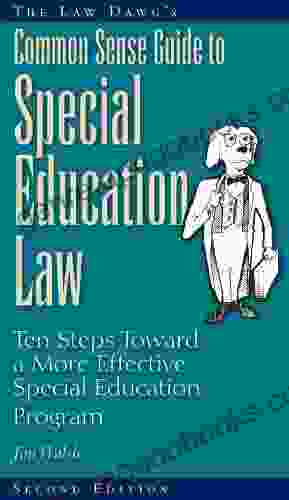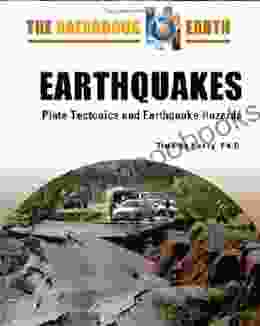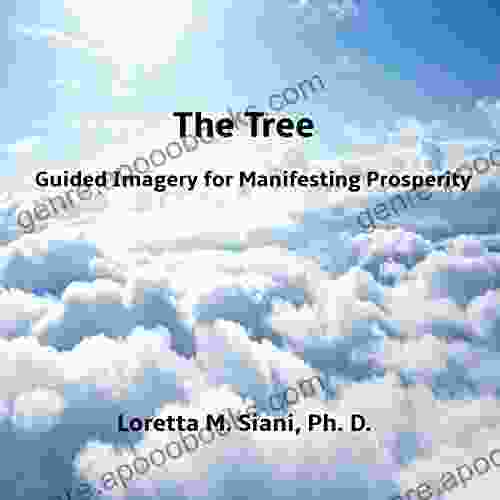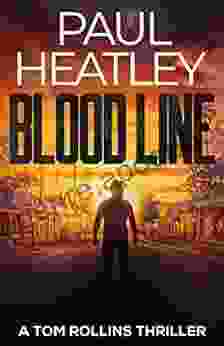Earthquakes, Plate Tectonics, and Earthquake Hazards: Unveiling the Earth's Dynamic Processes

The Earth's surface is a testament to the planet's dynamic nature. Earthquakes, volcanic eruptions, and mountain building are just a few of the processes that shape our planet's landscape and influence our lives. Understanding these processes is crucial for mitigating their potentially devastating effects and ensuring the safety of human communities.
5 out of 5
| Language | : | English |
| File size | : | 5048 KB |
| Text-to-Speech | : | Enabled |
| Word Wise | : | Enabled |
| Print length | : | 169 pages |
Earthquakes, Plate Tectonics, and Earthquake Hazards is a comprehensive guide to the Earth's dynamic processes. This book provides an in-depth exploration of earthquakes, from their causes and mechanisms to their impact on human societies. It also examines the role of plate tectonics in shaping the Earth's surface and discusses the various types of earthquake hazards, including ground shaking, liquefaction, and tsunamis.
Earthquakes: Causes and Mechanisms
Earthquakes are caused by the sudden release of energy below the Earth's surface. This energy can be generated by a variety of mechanisms, including:
- Faulting: When two tectonic plates move past each other, they can become stuck. As stress builds up, the plates can suddenly slip, releasing energy in the form of an earthquake.
- Volcanic activity: The movement of magma and other volcanic materials can cause the ground to shake.
- Landslides: The sudden movement of large amounts of rock and soil can also generate earthquakes.
- Human activities: Some human activities, such as mining and fracking, can also trigger earthquakes.
The magnitude of an earthquake is a measure of the energy released during the event. Earthquakes are classified into different magnitudes based on the amount of energy they release. The Richter scale is the most commonly used scale for measuring earthquake magnitude. Earthquakes with a magnitude of less than 2.0 are generally not felt, while earthquakes with a magnitude of 7.0 or greater can cause widespread damage.
Plate Tectonics: The Driving Force Behind Earthquakes
Plate tectonics is the theory that the Earth's surface is divided into a number of tectonic plates that move relative to each other. These plates are driven by the movement of the Earth's mantle, a layer of hot, molten rock beneath the Earth's crust.
The movement of tectonic plates can cause earthquakes in a number of ways. When two plates collide, they can either push up against each other, forming mountains, or one plate can slide beneath the other, causing the overlying plate to fold and buckle. These processes can create faults, which are zones of weakness in the Earth's crust where earthquakes are likely to occur.
Plate tectonics also plays a role in volcanic activity. When one plate moves beneath another, it can melt the overlying plate, creating magma. This magma can rise to the surface, forming volcanoes. Volcanic eruptions can also cause earthquakes.
Earthquake Hazards: Assessing and Mitigating Risks
Earthquakes can pose a significant hazard to human communities. The shaking caused by an earthquake can damage buildings, bridges, and other infrastructure. Earthquakes can also trigger landslides, tsunamis, and other secondary hazards.
The risk of earthquake damage depends on a number of factors, including the magnitude of the earthquake, the distance from the epicenter (the point on the Earth's surface directly above the earthquake's origin),and the local geology. Areas with soft, sandy soils are more susceptible to earthquake damage than areas with hard, rocky soils.
There are a number of ways to mitigate the risks of earthquake damage. These include:
- Building codes: Building codes can be used to ensure that buildings are designed to withstand earthquakes.
- Land-use planning: Land-use planning can be used to avoid building in areas that are at high risk of earthquake damage.
- Education and preparedness: Educating people about earthquakes and how to prepare for them can help to reduce the number of casualties and injuries.
Earthquakes, Plate Tectonics, and Earthquake Hazards is a comprehensive guide to the Earth's dynamic processes. This book provides an in-depth exploration of earthquakes, from their causes and mechanisms to their impact on human societies. It also examines the role of plate tectonics in shaping the Earth's surface and discusses the various types of earthquake hazards. By understanding these processes, we can better prepare for and mitigate the risks of earthquake damage.
Earthquakes, Plate Tectonics, and Earthquake Hazards is an essential resource for anyone who wants to learn more about the Earth's dynamic processes and the impact of earthquakes on human societies.
References
- Bolt, B. A. (2008). Earthquakes: A Primer. W.H. Freeman and Company.
- Kanamori, H. (2014). The Nature of Earthquakes. Earthquake Research Institute, University of Tokyo.
- Lay, T., & Wallace, T. C. (2014). Modern Global Seismology. Academic Press.
5 out of 5
| Language | : | English |
| File size | : | 5048 KB |
| Text-to-Speech | : | Enabled |
| Word Wise | : | Enabled |
| Print length | : | 169 pages |
Do you want to contribute by writing guest posts on this blog?
Please contact us and send us a resume of previous articles that you have written.
 Book
Book Novel
Novel Page
Page Chapter
Chapter Text
Text Story
Story Genre
Genre Reader
Reader Library
Library Paperback
Paperback E-book
E-book Magazine
Magazine Newspaper
Newspaper Paragraph
Paragraph Sentence
Sentence Bookmark
Bookmark Shelf
Shelf Glossary
Glossary Bibliography
Bibliography Foreword
Foreword Preface
Preface Synopsis
Synopsis Annotation
Annotation Footnote
Footnote Manuscript
Manuscript Scroll
Scroll Codex
Codex Tome
Tome Bestseller
Bestseller Classics
Classics Library card
Library card Narrative
Narrative Biography
Biography Autobiography
Autobiography Memoir
Memoir Reference
Reference Encyclopedia
Encyclopedia Miranda Kulig
Miranda Kulig Soweto Satir
Soweto Satir Therese Anne Fowler
Therese Anne Fowler Tim Crouch
Tim Crouch Larry S Gibson
Larry S Gibson Ml Nystrom
Ml Nystrom Paul Hoover
Paul Hoover David Baddiel
David Baddiel Sage Kafsky
Sage Kafsky Rebecca Stobaugh
Rebecca Stobaugh John T Molloy
John T Molloy Max Brooks
Max Brooks Lois Britton
Lois Britton Laura Coleman
Laura Coleman Mo Yan
Mo Yan Marcia L Tate
Marcia L Tate Pen Black
Pen Black Traci Hunter Abramson
Traci Hunter Abramson Raza Hasan
Raza Hasan Patrick Lindsay
Patrick Lindsay
Light bulbAdvertise smarter! Our strategic ad space ensures maximum exposure. Reserve your spot today!

 Dwayne MitchellThe Law Dawg Common Sense Guide To Special Education Law: A Must-Read for...
Dwayne MitchellThe Law Dawg Common Sense Guide To Special Education Law: A Must-Read for... Ernesto SabatoFollow ·12.4k
Ernesto SabatoFollow ·12.4k Jared NelsonFollow ·8.3k
Jared NelsonFollow ·8.3k Donovan CarterFollow ·4.7k
Donovan CarterFollow ·4.7k Gene PowellFollow ·8.4k
Gene PowellFollow ·8.4k Simon MitchellFollow ·17.9k
Simon MitchellFollow ·17.9k Derrick HughesFollow ·12.6k
Derrick HughesFollow ·12.6k Elton HayesFollow ·6.3k
Elton HayesFollow ·6.3k John ParkerFollow ·5.5k
John ParkerFollow ·5.5k

 Finn Cox
Finn CoxCarmen Suite For Flute Quartet (G Alto Flute) ( Carmen...
Experience the Magic of...

 Andy Cole
Andy ColeUncover Hidden Truths: A Comprehensive Guide to Detecting...
: The Silent...

 Ken Simmons
Ken SimmonsUnleash Your Potential: Transform Frustration and...
Are you tired of feeling...

 Rick Nelson
Rick NelsonHard To Kill: A Gripping Thriller That Will Keep You on...
Tom Rollins is a...

 Ivan Turner
Ivan TurnerUnleash the Power of Your Breath: Discover Breath...
In the tapestry of life, where stress and...
5 out of 5
| Language | : | English |
| File size | : | 5048 KB |
| Text-to-Speech | : | Enabled |
| Word Wise | : | Enabled |
| Print length | : | 169 pages |












